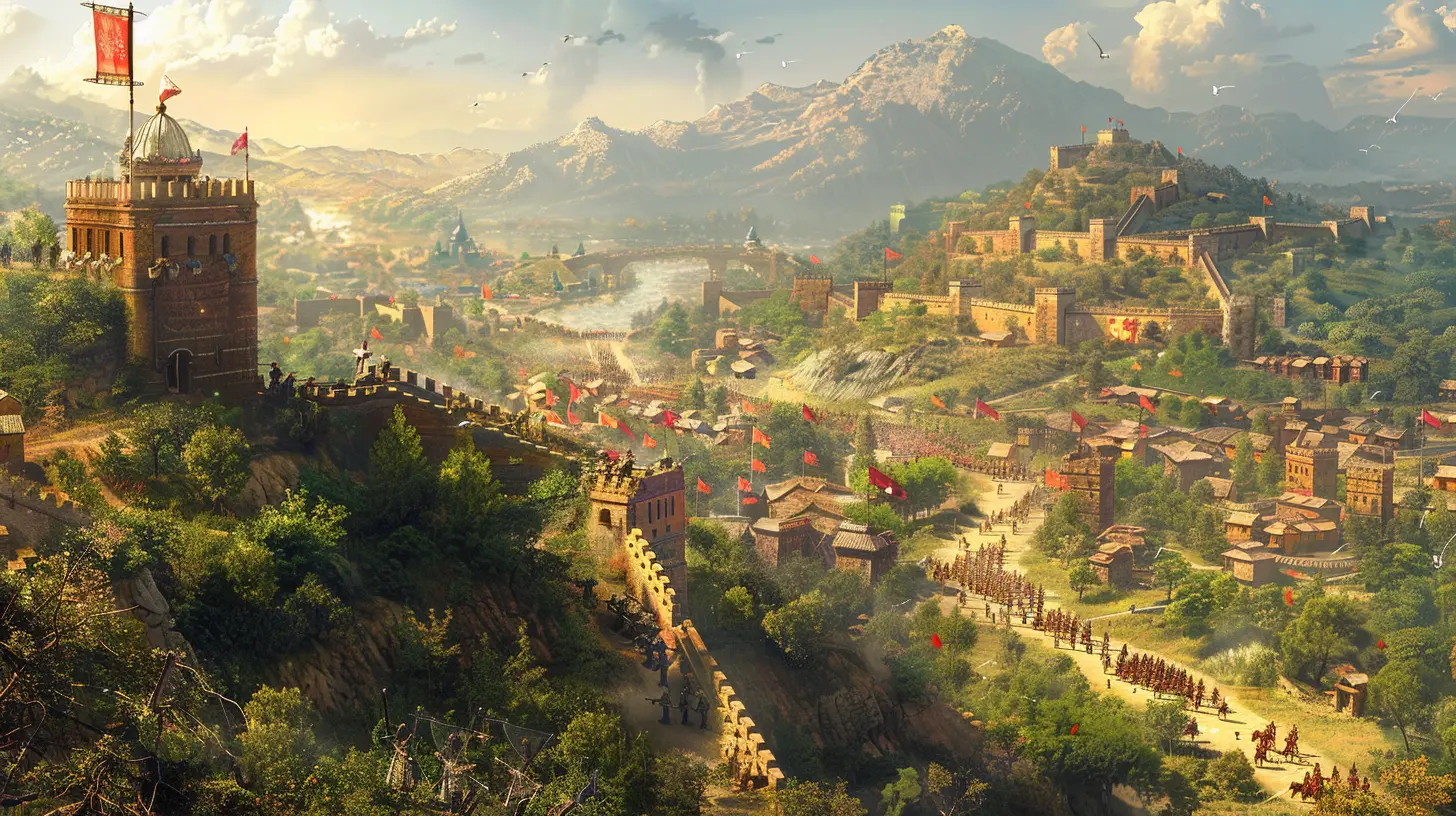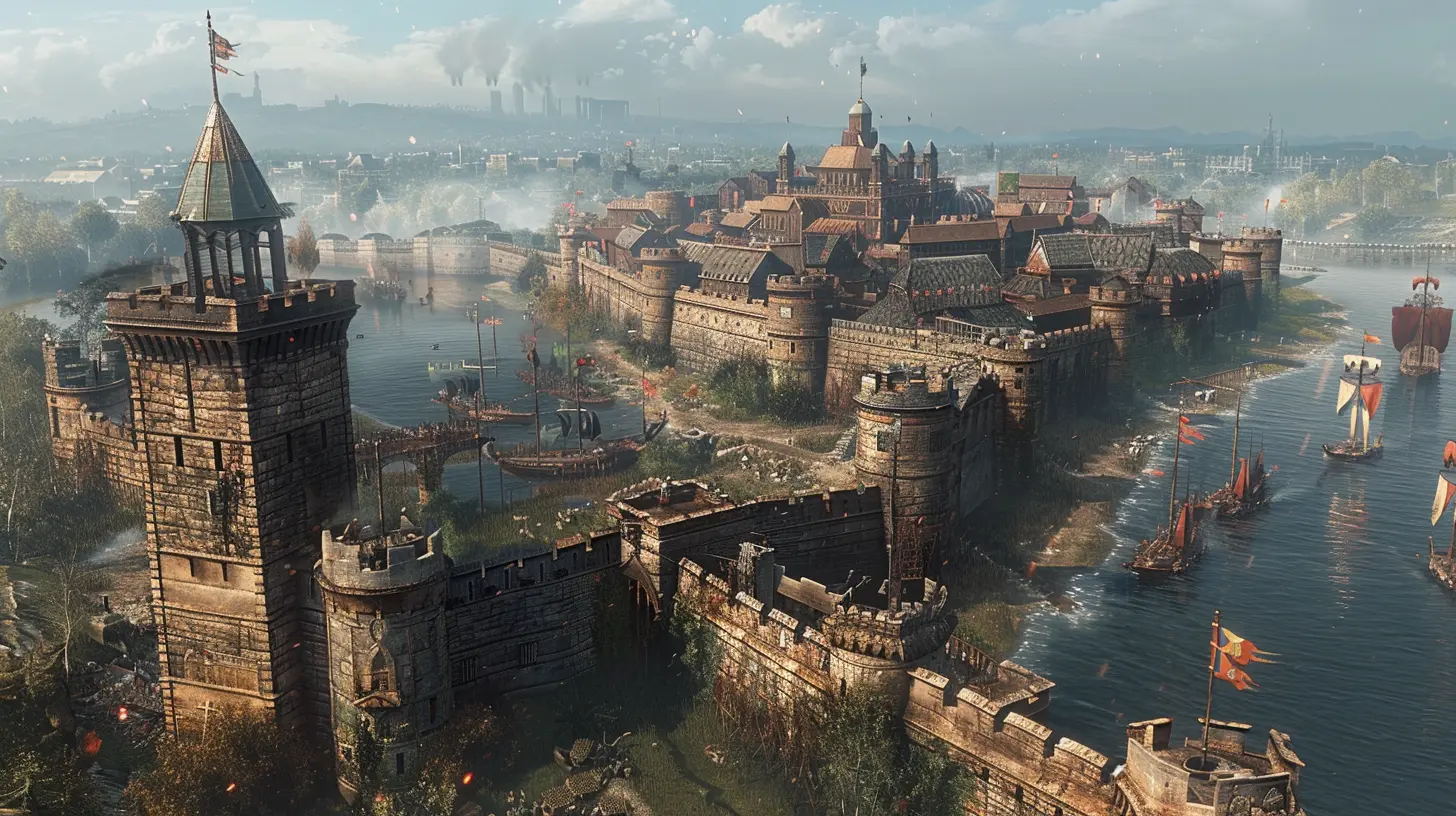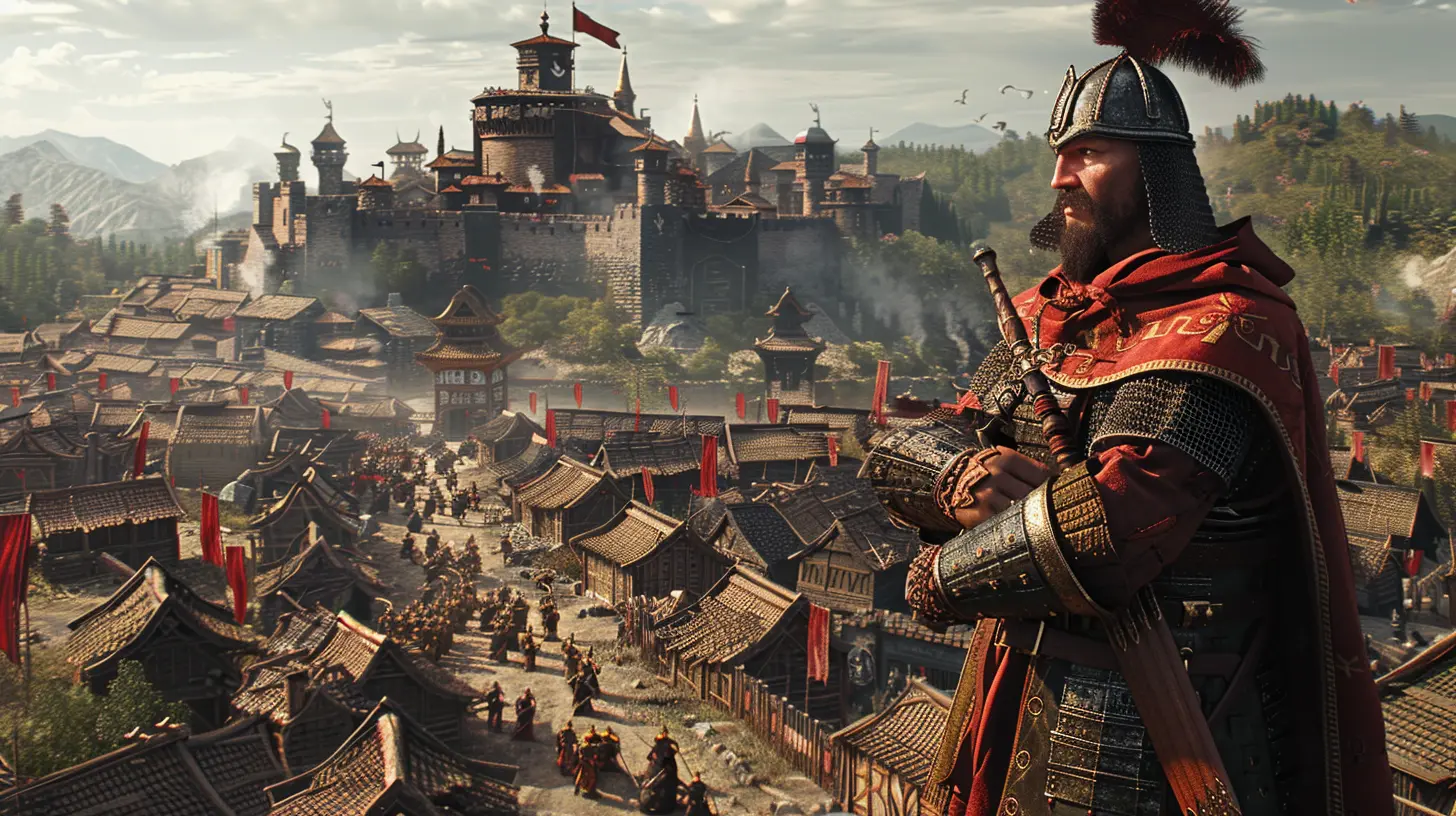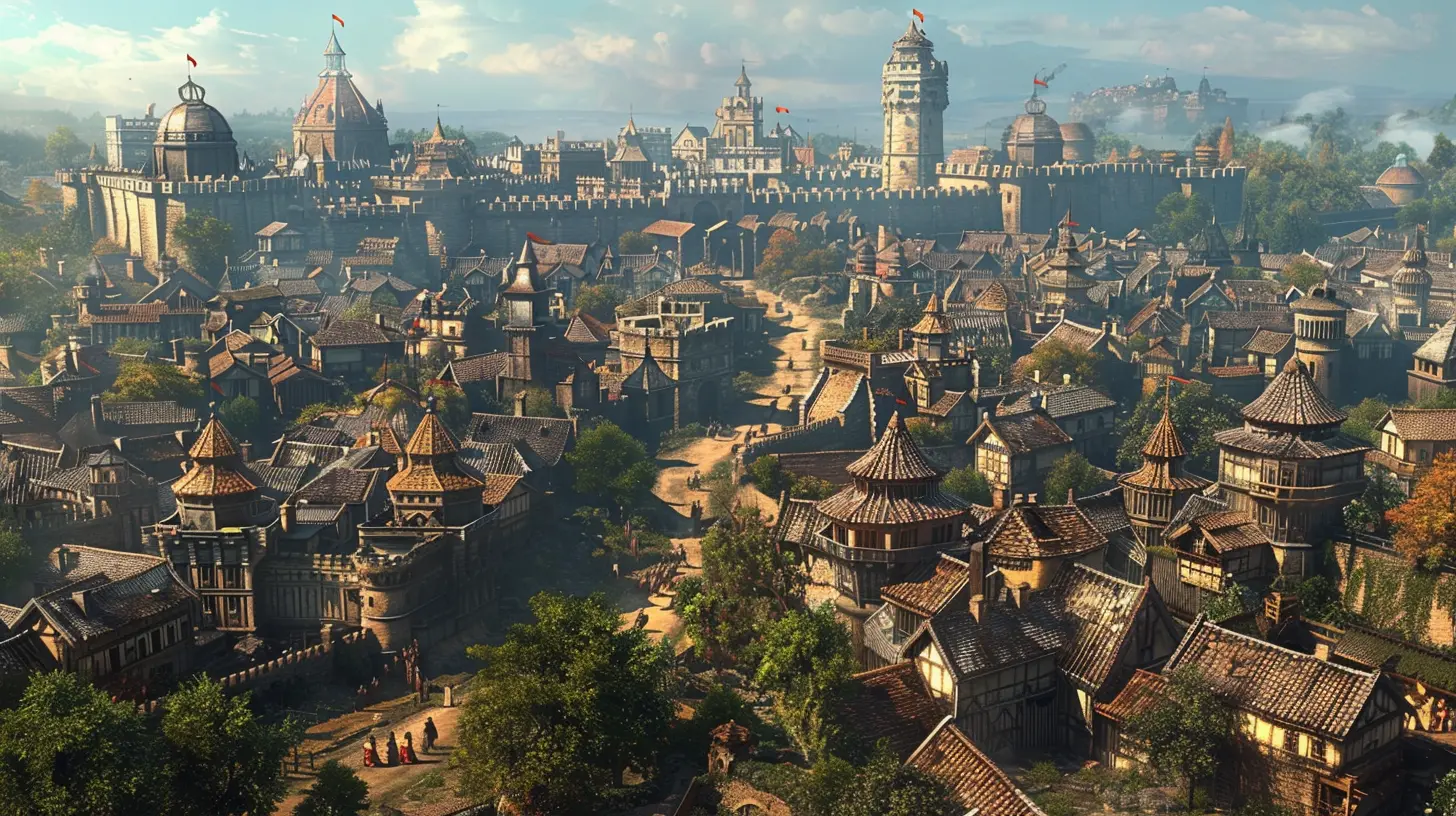Mastering Siege Warfare in Long Campaign Strategy Games
12 July 2025
Picture this: your army stands before the towering walls of an enemy fortress, banners waving and siege engines creaking ominously. You’re the puppet master pulling the strings, craving glory and victory. But here’s the kicker—it’s not just a battle; it’s a chess match with giant trebuchets. Siege warfare in long campaign strategy games isn’t just about bashing down walls; it’s a fine art wrapped in chaos. Let’s dive into the nitty-gritty of mastering the virtual battlefield, one broken gate at a time. 
Wait, What’s Siege Warfare Anyway?
Good question! Siege warfare boils down to being the obnoxious neighbor in medieval times. Instead of knocking on the front door with cookies, you’re knocking it down with a battering ram. In strategy games, this means laying waste to a heavily fortified settlement, complete with walls, towers, and grumpy defenders who’d rather you just stayed home.Siege battles aren’t your run-of-the-mill skirmishes. They’re slow, precise, and require more planning than my last attempt to cook lasagna (spoiler: it went up in flames). You’re no longer just thinking about troop placement and flanking; you’re puzzling over resource management, siege equipment, morale, and how long your troops can go without a snack break. 
The Prep Work: Before You Bring the Boom
Before you bust out the big guns—or, you know, trebuchets—preparation is key. Think of it like planning a barbecue, except you’re grilling your enemy’s hopes and dreams.1. Scout Like Your Life Depends on It
First rule of war? Don’t go in blind. Send out scouts to check out the enemy fortress. How high are the walls? Are there choke points? Where are the towers that’ll rain arrows on your troops like an angry swarm of bees? Knowing the layout is half the battle.Think of scouting as reading the instruction manual before you build IKEA furniture. Sure, you could wing it, but you’ll probably end up with something broken—and that something is your army.
2. Assemble Your Siege Toys
No, you can’t just bring swords to a wall fight. You’ll need siege engines, and lots of them. Trebuchets, catapults, battering rams, siege towers—each one plays a role.- Trebuchets: The long-distance rock throwers. Perfect for smashing walls (and the dreams of anyone inside).
- Siege Towers: Mobile staircases that let your troops scale walls like medieval Spider-Men.
- Battering Rams: For when you need to knock politely on the gates—by which I mean, not politely at all.
Whatever you do, don’t forget your engineers. They’re the unsung heroes of every siege. Without them, good luck building anything more complex than a sandcastle.
3. Stockpile Supplies
Sieges aren’t over in a day. Sometimes, they drag on for weeks, months, or until you’ve practically aged a decade. Make sure your troops have enough food, ammo, and morale boosters (maybe a bard or two for entertainment).Nobody fights well on an empty stomach. Imagine trying to storm a gate while daydreaming about pizza—it’s just not happening. 
Siege Tactics: How to Break a Fortress (Without Losing Your Mind)
Alright, you’ve got your army, your siege engines, and enough snacks to feed a small nation. Now comes the tricky part—actually taking the fortress.1. Surround and Conquer
The classic strategy is to encircle the castle and starve the defenders. No one’s singing sea chanties when the food runs out. But beware, a starving enemy is often a desperate enemy. They might sally out and attack you when you least expect it.Pro Tip: Block their escape routes! If they try to smuggle supplies into the fortress, you’ll want to intercept those sneaky supply lines.
2. Divide and Conquer
Focus your attacks on weaker sections of the fortress. Like a big, medieval game of Jenga, if one part of the fortress starts to crumble, the rest will follow. Target low-level walls or older sections where the masonry is as unreliable as the Wi-Fi at your grandparents’ house.3. Ladders and Towers: Go Vertical
Siege towers and ladders are great for getting your troops up and over the walls. It’s not easy—climbing while arrows rain down on you is about as fun as a tax audit—but once your troops breach the walls, things get spicy.It’s like sneaking into the enemy’s treehouse, only their treehouse is full of angry soldiers with swords.
4. The Troop Shuffle
You know that one friend who always hogs the comfy couch? Don’t let your troops be that friend. Cycle them out! Exhausted units need to rest. Keep the fresh ones on the front lines to maintain momentum.Nothing says "we’re going to win" like having an army that isn’t on the verge of keeling over. 
When Things Go Wrong (Because They Will)
Let’s face it—no plan survives first contact with the enemy. Something will go wrong. Maybe your trebuchets miss every shot, or your soldiers decide that running face-first into a hail of arrows is a good idea.1. Adapt Like a Chameleon
Flexibility is your best friend. If a section of your army falters, reinforce it. If the wall refuses to crumble, try a different approach. Adaptation is the name of the game.Remember: there’s no shame in a tactical retreat. Better to regroup and try again than to get wiped out because you were too stubborn to back off.
2. Use the Environment
Some games let you use the terrain to your advantage. Got a river nearby? Funnel the enemy into it. Is there high ground? Park your archers up there and let them rain down death like medieval snipers.Sometimes, the map is your best ally.
Victory (And What Comes After)
Congratulations! The gates are down, the walls are breached, and the enemy is running for the hills. But hold up—don’t pop the champagne just yet.1. Mop-Up Duty
Even after you’ve taken the fortress, there are usually stragglers hiding in corners, waiting to ambush your unsuspecting troops. Do a clean sweep before declaring victory.Think of it as cleaning up after a party—the kind where the furniture is broken, and everyone’s too tired to help.
2. Consolidate Your Gains
Occupying a fortress isn’t as simple as plopping your flag on the tallest tower. You’ll need to stabilize the region, repair the damages, and maybe even garrison some troops to keep the locals in line.And hey, now you’ve got a shiny new fortress to defend. The circle of life continues.
Key Takeaways (Because TL;DR)
- Preparation is everything—scout, build, stockpile.- Use siege engines wisely; they’re expensive, but oh-so-satisfying.
- Be adaptable—expect the unexpected, and pivot when necessary.
- Victory is sweet, but don’t forget the cleanup and consolidation!
Mastering siege warfare in long campaign strategy games isn’t just about brute force. It’s about strategy layered with just the right amount of chaos. And honestly, isn’t that why we love these games? Who doesn’t want to play the role of a cunning, slightly deranged commander?
all images in this post were generated using AI tools
Category:
Game StrategiesAuthor:

Jack McKinstry
Discussion
rate this article
2 comments
Paul Mercado
Who knew that sieging castles could be such a blast? It's like a game of high-stakes chess, but with catapults and lots more drama! Just remember: a well-timed pie-throw can be just as effective as a battering ram—strategy is key! 🎯🏰
November 23, 2025 at 5:36 PM

Jack McKinstry
Absolutely! Siege warfare mixes strategy and creativity, making it a thrilling challenge on the battlefield. A surprise pie-throw? Genius! 🎯🏰
Kian Patterson
Great insights! Siege tactics really enhance strategic gameplay.
July 21, 2025 at 3:44 PM

Jack McKinstry
Thank you! I'm glad you found the insights helpful. Siege tactics can truly elevate your strategic approach in these games!


